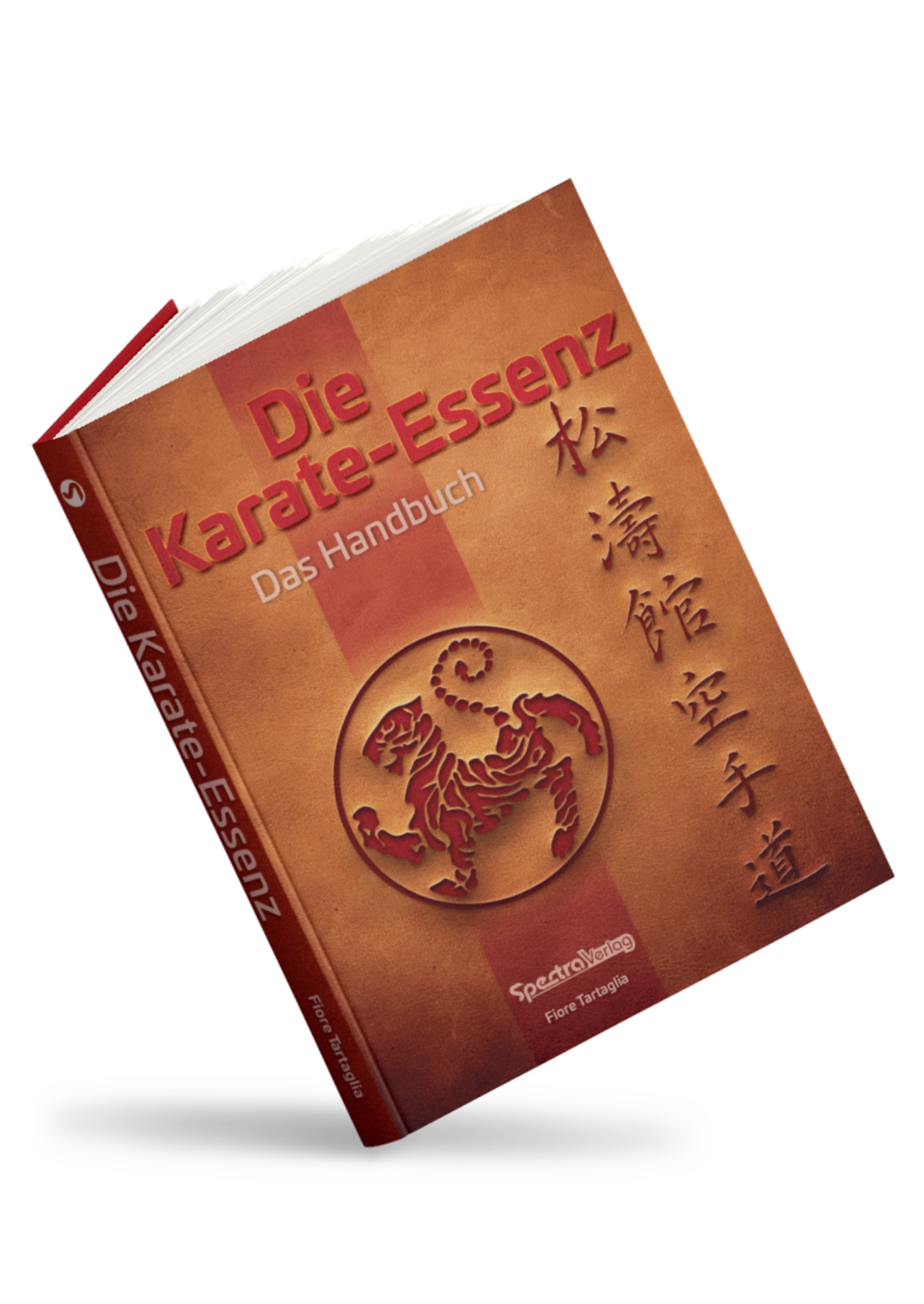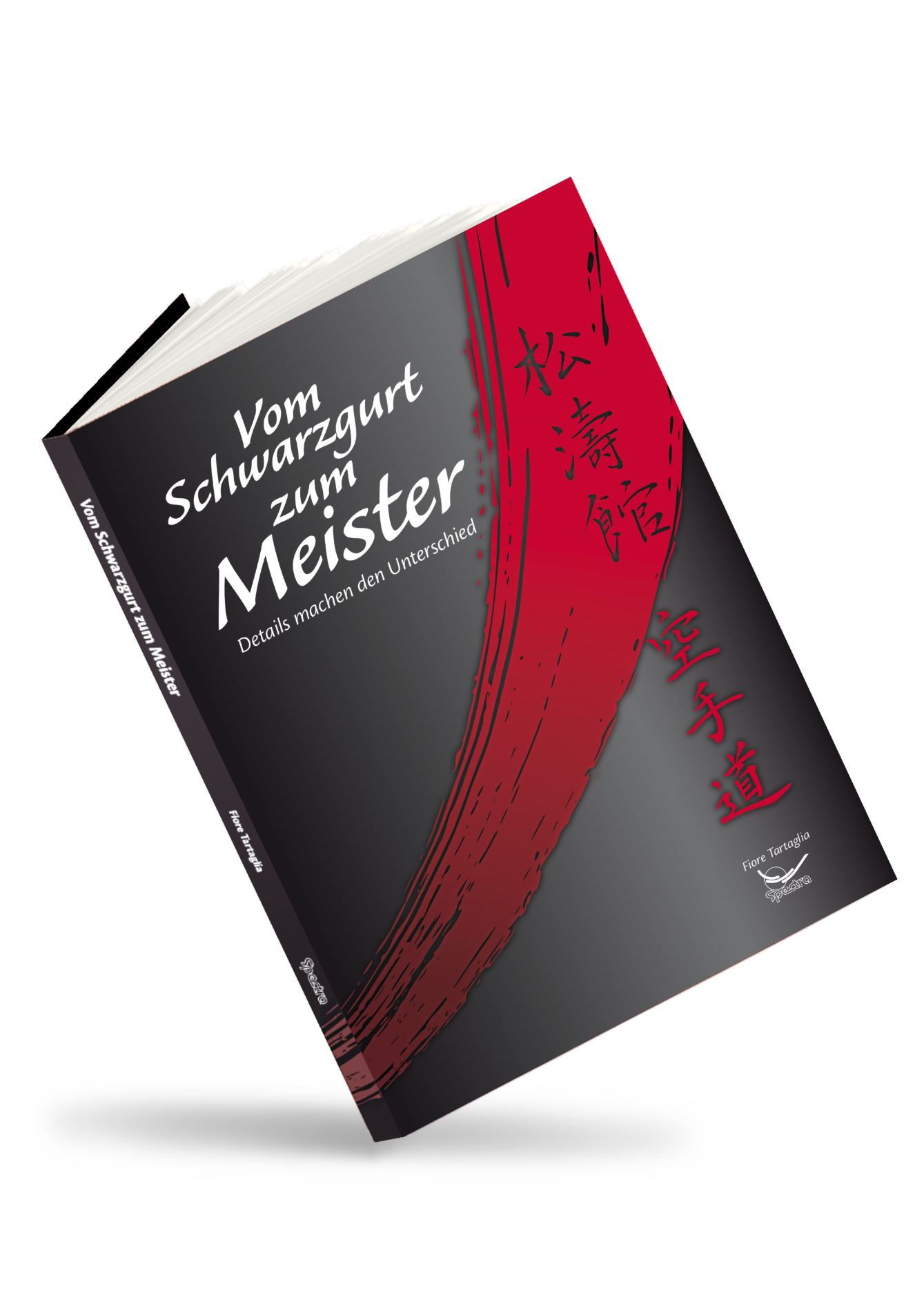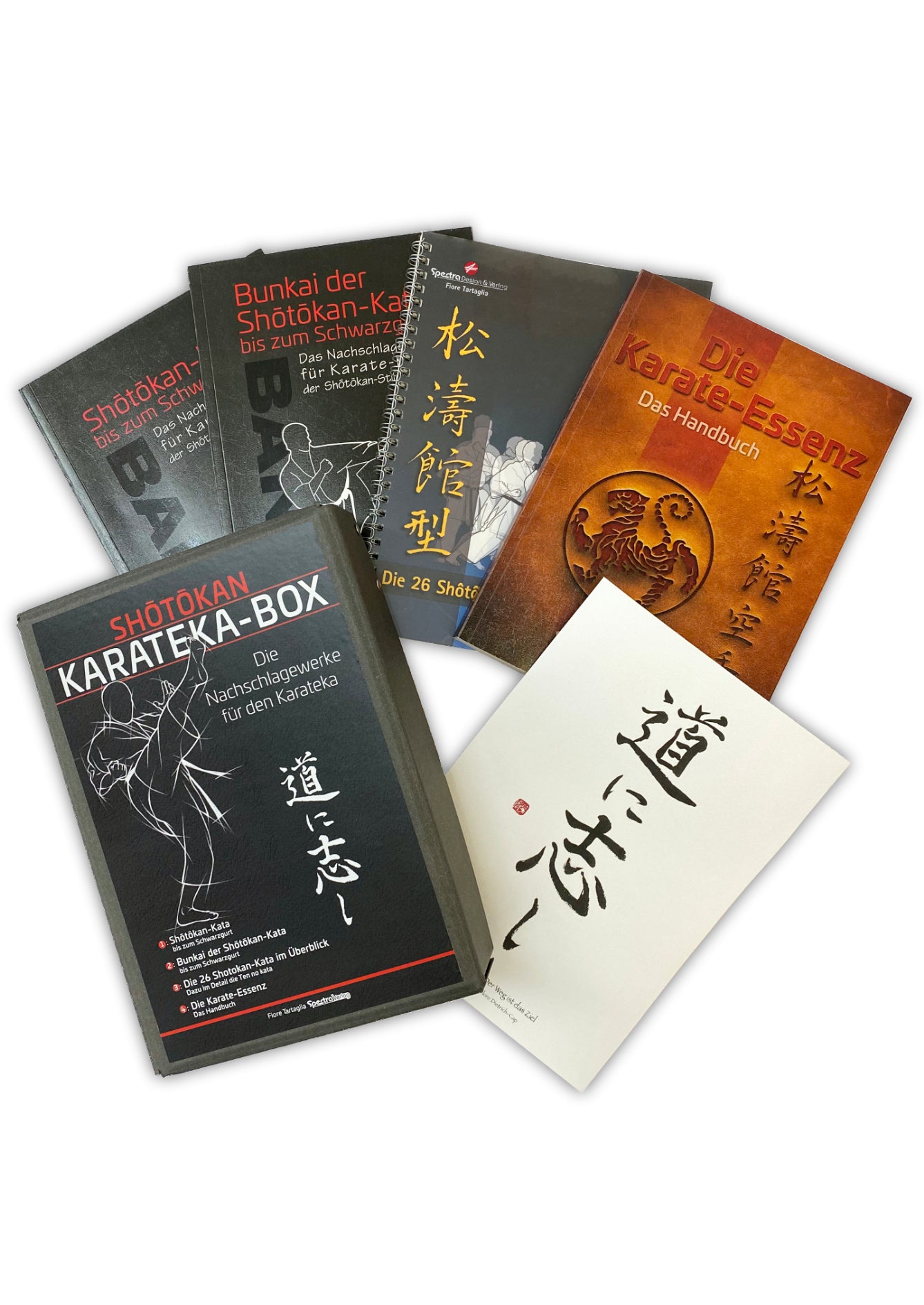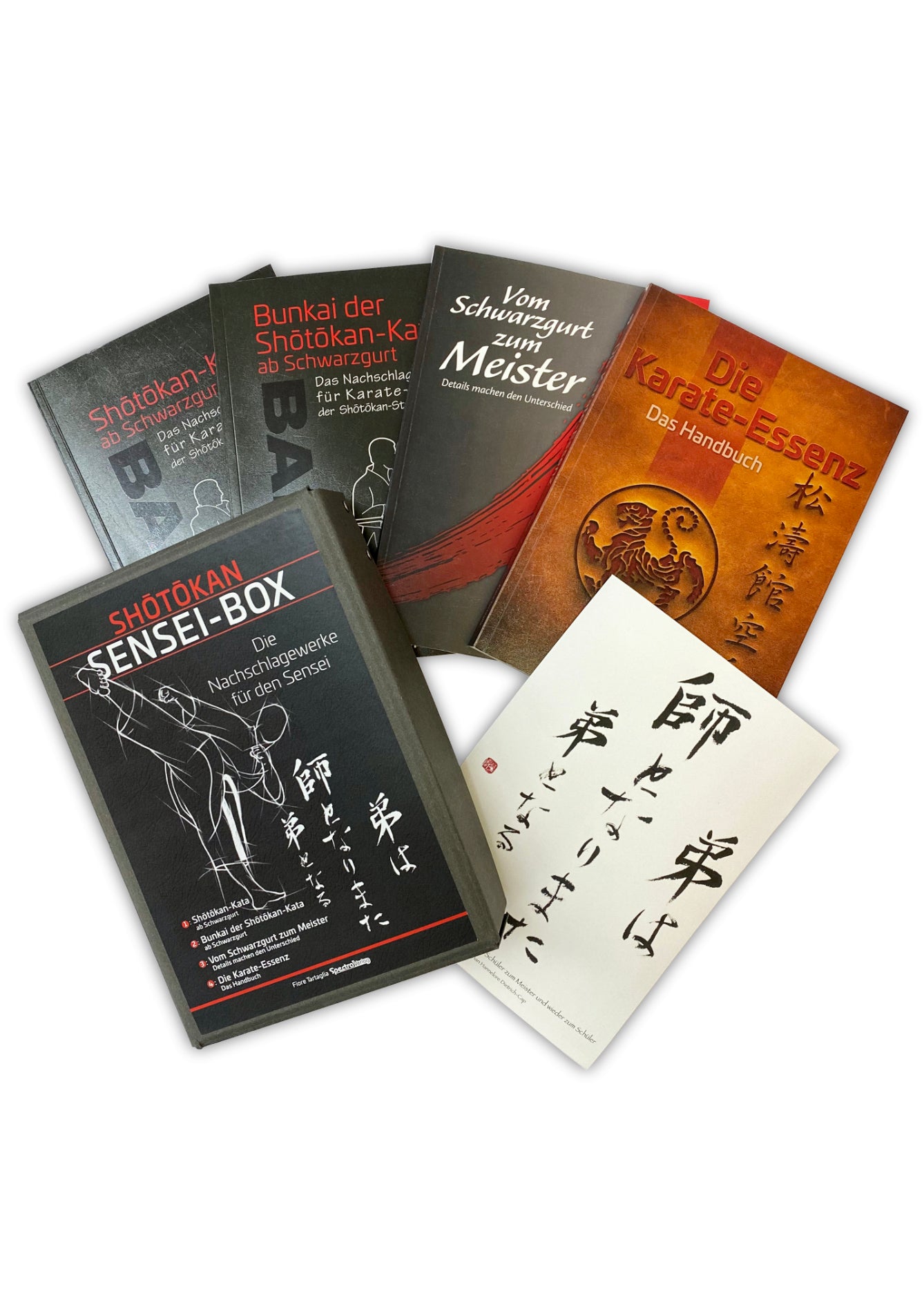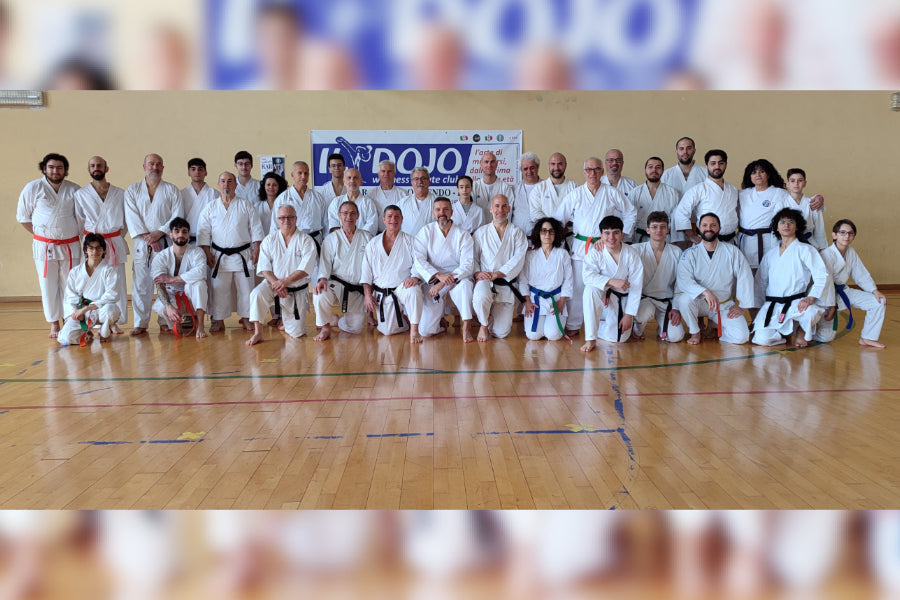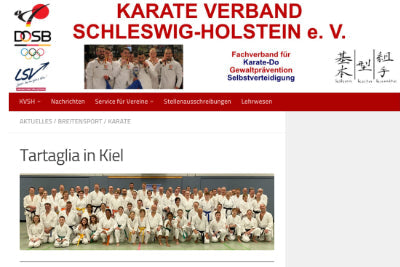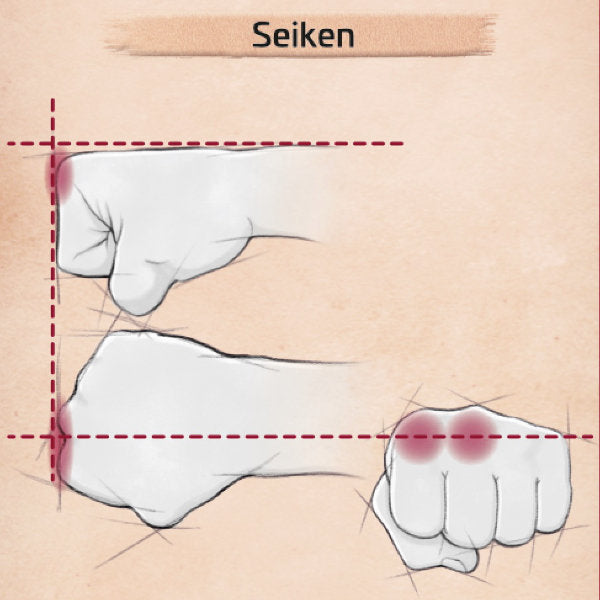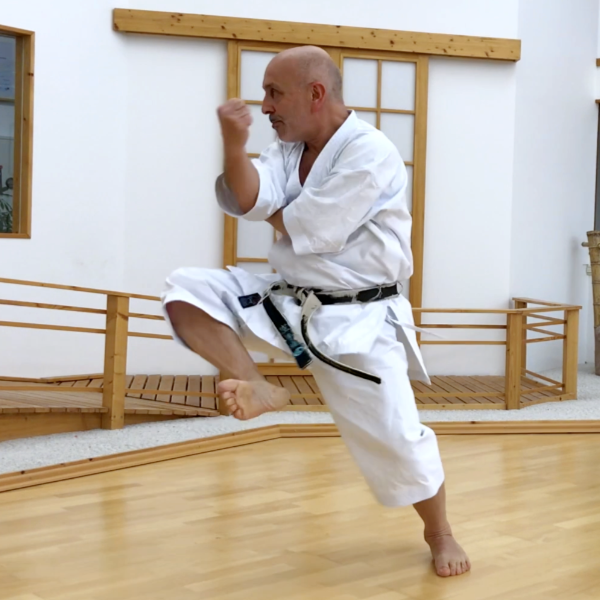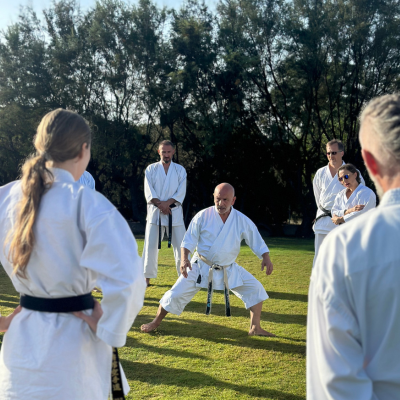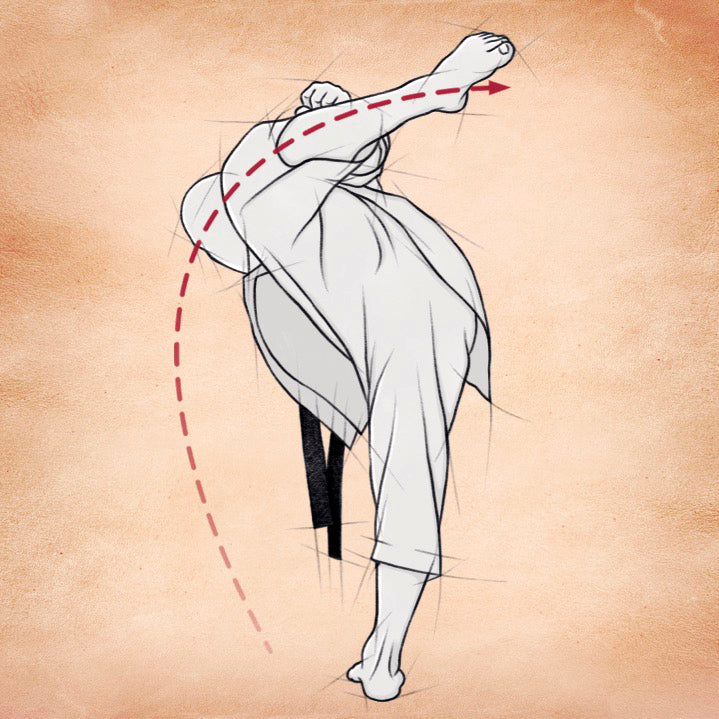The kime – the union of the forces available to a person – results from the interaction of various elements: exhalation, muscle tension, correct alignment of the technique, concentration on the action as well as the combination of willpower and the physical and mental focus of the moment.
To summarize: Kiai is the battle cry and Kime is the union of forces.
Although kime is usually performed in conjunction with kiai, it can also be used without it: Whenever a powerful technique is executed, kime should be applied at the time of engagement. Therefore, high-level karate techniques are not performed with force, but with kime—a crucial distinction. This is the reason why people with seemingly little strength can defend themselves successfully. Excessive use of muscle power in karate is therefore a sign of immature skills.
The correct use of kime begins with completely relaxed muscles – only those muscles required for the movement should be used. This allows the practitioner to achieve the maximum speed of a technique. The concentration of all elements (as described at the beginning) should only be used at the moment of the technique's end point. Maximum possible relaxation follows immediately afterwards. Of course, the zanshin is maintained. The pronounced use of this alternating rhythm is essential for kime. Mastering kime is an ambitious goal and accordingly requires a certain amount of time and the necessary training intensity. However, kime is fundamental to karate and an essential element, especially at an advanced level.

